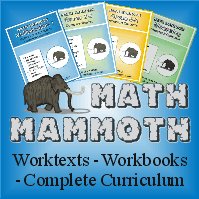
Financial Accounting from Professor in a Box is a beginning college level accounting course written by Michael P. Licata, Ph.D. specifically for homeschoolers. In the course the student learns to prepare and interpret the four basic financial statements of a business. Anyone who is preparing to work in business (whether for a company or being self-employed) can benefit from this course.
With 12 chapters covered in 28 lessons, this course includes the content to prepare a student to take the CLEP Financial Accounting Exam (see Course Syllabus). It Includes lectures, practice problems, solutions, quizzes and exams. (The quizzes are similar in content and form to the CLEP Exam.) The website states that the average lesson takes 75 minutes to view the Flash lecture and 1.5 to 2.5 hours to work the problems. The only prerequisite is that the student has basic algebra skills.
Financial Accounting is currently priced at $134.99. Professor in a Box offers a Full Money Back Guarantee. Work through the first three chapters and if you’re not satisfied with the course, send it back for a full refund including shipping.
TECHNICAL REQUIREMENTS
Windows XP/Vista
1.8 Ghz Intel Pentium II or equivalent
256 MB of RAM
4x CD-ROM
16 bit or higher color
Flash Player
You do need Acrobat reader which is a free download.
Internet access was recommended to complete some of the problems in chapter 1.
INCLUDED
The box comes with the CDs housed in a nice hard plastic carry case, a calculator, and a pencil. The Instructor CD includes a course syllabus, lesson plans for full and short course, quizzes, and exams. It also includes Excel templates for every problem in the course so that students can learn accounting while honing and improving their skills in working with spreadsheet software such as Microsoft Excel.Lecture Discs include Flash lectures, Lecture slides, Key Terms and Concepts, Chapter Problems, and Chapter Problem Solutions. The lecture slides are also available in print-friendly format.
OUR EXPERIENCE
My oldest is only in 9th grade and I did not feel she was ready for this course. Academically, she could have done the work but I want her to complete the course when she is better able to fully understand the process, not just be able to follow the formulas. I plan for her to take this course in 12th grade after taking personal finance.
I do feel that this course can be a good resource for high school students before entering their adult years. The more information they can learn beforehand, the more they have to draw on when it is needed.
It is not a light course and it will take discipline to complete. But that is because we are dealing with college level material.
Please visit the TOS Crew Blog to read other families' experiences.
Disclosure:This product was provided to our family for free as members of the 2009-2010 Old Schoolhouse Magazine Homeschool Crew. No further compensation was received. Reviews and opinions expressed in this blog are my own.






 Have you ever owned a product that drove you nuts but your kids loved? Well, the GyMathtics DVD from
Have you ever owned a product that drove you nuts but your kids loved? Well, the GyMathtics DVD from 





